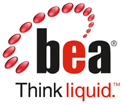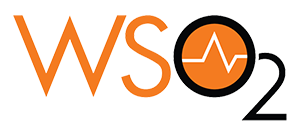Customer relationship management (CRM) is a process in which a business or other organization administers its interactions with customers, typically using data analysis to study large amounts of information.

The point of sale (POS) or point of purchase (POP) is the time and place at which a retail transaction is completed. At the point of sale, the merchant calculates the amount owed by the customer, indicates that amount, may prepare an invoice for the customer, and indicates the options for the customer to make payment. It is also the point at which a customer makes a payment to the merchant in exchange for goods or after provision of a service. After receiving payment, the merchant may issue a receipt for the transaction, which is usually printed but can also be dispensed with or sent electronically.
An escrow is a contractual arrangement in which a third party receives and disburses money or property for the primary transacting parties, with the disbursement dependent on conditions agreed to by the transacting parties. Examples include an account established by a broker for holding funds on behalf of the broker's principal or some other person until the consummation or termination of a transaction; or, a trust account held in the borrower's name to pay obligations such as property taxes and insurance premiums. The word derives from the Old French word escroue, meaning a scrap of paper or a scroll of parchment; this indicated the deed that a third party held until a transaction was completed.

BEA Systems, Inc. was a company that specialized in enterprise infrastructure software products, which was wholly acquired by Oracle Corporation on April 29, 2008.
In software engineering, service-oriented architecture (SOA) is an architectural style that focuses on discrete services instead of a monolithic design. By consequence, it is also applied in the field of software design where services are provided to the other components by application components, through a communication protocol over a network. A service is a discrete unit of functionality that can be accessed remotely and acted upon and updated independently, such as retrieving a credit card statement online. SOA is also intended to be independent of vendors, products and technologies.
Data quality refers to the state of qualitative or quantitative pieces of information. There are many definitions of data quality, but data is generally considered high quality if it is "fit for [its] intended uses in operations, decision making and planning". Moreover, data is deemed of high quality if it correctly represents the real-world construct to which it refers. Furthermore, apart from these definitions, as the number of data sources increases, the question of internal data consistency becomes significant, regardless of fitness for use for any particular external purpose. People's views on data quality can often be in disagreement, even when discussing the same set of data used for the same purpose. When this is the case, data governance is used to form agreed upon definitions and standards for data quality. In such cases, data cleansing, including standardization, may be required in order to ensure data quality.

Verifone is an American multinational corporation headquartered in Coral Springs, Florida. Verifone provides technology for electronic payment transactions and value-added services at the point-of-sale. Verifone sells merchant-operated, consumer-facing and self-service payment systems to the financial, retail, hospitality, petroleum, government and healthcare industries. The company's products consist of POS electronic payment devices that run its own operating systems, security and encryption software, and certified payment software, and that are designed for both consumer-facing and unattended environments.
Information lifecycle management (ILM) refers to strategies for administering storage systems on computing devices.
An XML appliance is a special-purpose network device used to secure, manage and mediate XML traffic. They are most popularly implemented in service-oriented architectures (SOA) to control XML-based web services traffic, and increasingly in cloud-oriented computing to help enterprises integrate on premises applications with off-premises cloud-hosted applications. XML appliances are also commonly referred to as SOA appliances, SOA gateways, XML gateways, and cloud brokers. Some have also been deployed for more specific applications like Message-oriented middleware. While the originators of the product category deployed exclusively as hardware, today most XML appliances are also available as software gateways and virtual appliances for environments like VMWare.
A service delivery platform (SDP) is a set of components that provides a service(s) delivery architecture for a type of service delivered to consumer, whether it be a customer or other system. Although it is commonly used in the context of telecommunications, it can apply to any system that provides a service. Although the TM Forum (TMF) is working on defining specifications in this area, there is no standard definition of SDP in industry and different players define its components, breadth, and depth in slightly different ways.

Microsoft Customer Care Framework (CCF) was a desktop-based framework which was used to address issues faced by service providers caused by multiple line of business (LOB) systems while interacting with their customers. It was discontinued though many of its core functions were moved to an add-in for the Microsoft Dynamics CRM product named the Unified Service Desk.
Performance engineering encompasses the techniques applied during a systems development life cycle to ensure the non-functional requirements for performance will be met. It may be alternatively referred to as systems performance engineering within systems engineering, and software performance engineering or application performance engineering within software engineering.
Master data represents "data about the business entities that provide context for business transactions". The most commonly found categories of master data are parties, products, financial structures and locational concepts.
Information Framework (IFW) is an enterprise architecture framework, populated with a comprehensive set of banking-specific business models. It was developed as an alternative to the Zachman Framework by Roger Evernden.
Master data management (MDM) is a discipline in which business and information technology work together to ensure the uniformity, accuracy, stewardship, semantic consistency and accountability of the enterprise's official shared master data assets.

WSO2 is an open-source technology provider founded in 2005. It delivers software and cloud solutions that provide foundational technologies for application development and identity and access management (IAM). This represents an expansion upon its original focus on integrating application programming interfaces (APIs), applications, and web services locally and across the Internet.

Federated architecture (FA) is a pattern in enterprise architecture that allows interoperability and information sharing between semi-autonomous de-centrally organized lines of business (LOBs), information technology systems and applications.
Software categories are groups of software. They allow software to be understood in terms of those categories, instead of the particularities of each package. Different classification schemes consider different aspects of software.
IBM Operational Decision Manager (ODM) is IBM's Business Rule Management System (BRMS). IBM ODM also incorporates IBM's implementation of business event processing capabilities.
The Banking Industry Architecture Network e.V. (BIAN) is an independent, member owned, not-for-profit association to establish and promote a common architectural framework for enabling banking interoperability. It was established in 2008.





